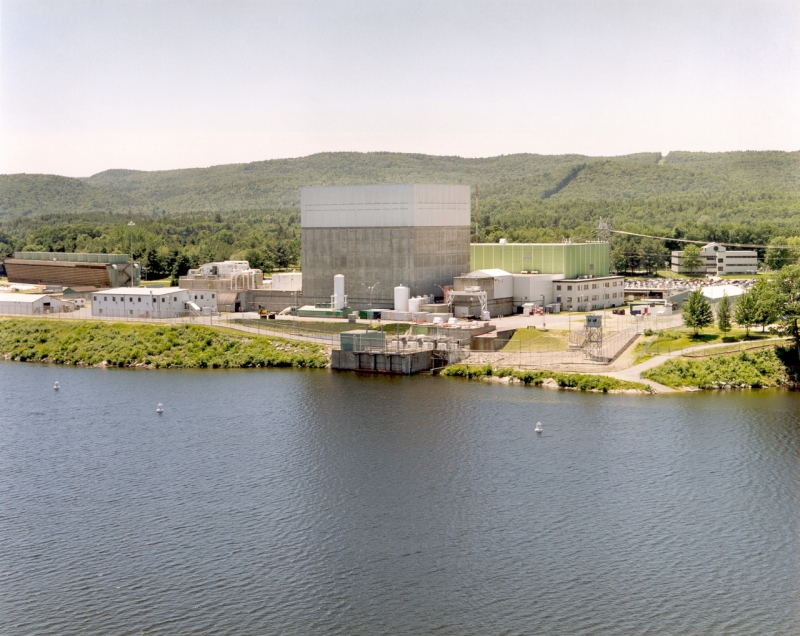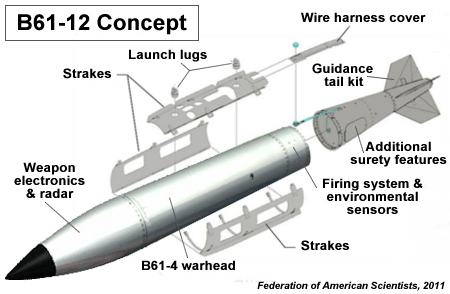
Blog
-
Geiger Readings for January 03, 2014
Ambient office = 136 nanosieverts per hourAmbient outside = 103 nanosieverts per hourSoil exposed to rain water = 74 nanosieverts per hourWhite onion from Central Market = 59 nanosieverts per hourTap water = 73 nanosieverts per hourFiltered water = 67 nanosieverts per hourDover sole – Caught in USA = 92 nanosieverts per hour -
Nuclear Reactors 191 – Japan Changes Rules For Grid Access for Renewable Energy
Following the Fukushima nuclear disaster in Japan in March of 2011, Japan shut down all of it nuclear power plants. Abe, the new Prime Minister of Japan has targeted the domestic nuclear industry as being critical to the economic expansion of Japan, both internally and as a source exportable technology. Despite widespread public opposition, Abe has pushed forward to restart Japan’s idle nuclear power reactors. Draconian laws have been passed to prevent the media from departing from the official government line on the need for and safety of nuclear power in Japan.
In mid 2012, a feed-in tariff system was enacted which requires Japan’s ten utilities to purchase electricity made from solar, wind, geothermal, mini-hydro and biomass sources from private firms. Many companies rushed to take advantage of the guaranteed fixed price per kilowatt hour provided by the feed-in tariff. There were many more applications under the program than anticipated by the central government. The national government has approved almost a million and a half projects under the new system. Around half of these projects focus on small rooftop solar projects that produce less than ten kilowatts of electricity. Over a thousand projects have been approved that produce more than two megawatts of power.
Last September, Kyushu Electric Power Company (KEPC) announced that they would “no longer sign contracts with most companies that were supplying renewable energy.” The reason given was that the KEPC transmission network could not handle the estimated load if KEPC actually purchased electricity from all the renewable energy providers that it had contractual arrangements with. Four more of the ten utilities in Japan quickly announced the same policy that KEPC adopted. This action by the utilities caused many supporters of renewable energy to complain that this would reduce Japan’s move to renewable energy sources.
Recently, in response to the feed-in tariff situation, an agency of the Ministry of Economy, Trade and Industry issued a revision of the feed-in tariff system rules for the national electrical grid. Supporters of the revisions say that government intervention will ” ensure safe and stable supply of all forms of electricity by helping to prevent renewable energy from overloading the grid and causing blackouts.” Critics of the new rules say that the real reason for the revisions is to limit the production of renewable energy so that when the nuclear power plants are brought back online, there will sufficient grid capacity to accept the power that they generate.
Under the original feed-in tariff system, companies could sign contracts to supply electricity to the utility grids but they did not have a deadline set for construction. Obviously, some firms opted to delay construction in hopes that the cost of construction would fall and they would make a greater profit. The new rules call for the setting of deadlines for construction. If a company misses the deadline, it might lose the right to access the utility transmission network. Originally, the feed-in tariff system limited output of renewable energy sources to a maximum of thirty days a year. The new rules call for limits that are calculated by the hour. This will provide flexibility and insure that there is sufficient grid capacity to accept available energy.
The government has said that it wants to reduce Japan’s reliance on nuclear power but the new feed-in tariff rules are based on the assumption that Japan’s idle nuclear power plants will be brought back on-line and need grid capacity that could be supplied by renewables.
-
Geiger Readings for January 02, 2014
Ambient office = 122 nanosieverts per hourAmbient outside = 72 nanosieverts per hourSoil exposed to rain water = 67 nanosieverts per hourDried Blueberries from Central Market = 83 nanosieverts per hourTap water = 122 nanosieverts per hourFiltered water = 112 nanosieverts per hour -
Wishing Everyone a Happy New Year!
I don’t have any predictions or resolutions. I do hope that in the year ahead, there is not a major nuclear accident or the detonation of a nuclear bomb anywhere in the world. I also hope that the public and investors continue to abandon nuclear power in favor of efficiency, conservation and renewables.
-
Nuclear Reactors 190 – Entergy Closes the Vermont Yankee Nuclear Power Plant
The supporters of nuclear power are trying to crank up public support and investors for a variety of nuclear power projects. Unfortunately for them, energy efficiency and conservation are estimated to cost one fourth of the price of a new nuclear power plant. Wind power and cheap natural gas are estimated to be about half the cost of nuclear power. Reactors that are currently under construction in the U.S. and Europe are over budget and behind schedule. While the cost of building a nuclear reactors are well understood, there is less appreciation for escalating operating costs. As reactors age, they become more and more expensive to repair. At some point, it is no longer economically feasible to keep repairing an old reactor. Nuclear power has strong political support and is fighting to prevent renewable energy sources from being exploited but, hopefully, it is losing the battle.
Entergy is closing the Vermont Yankee power plant in Vernon, Vermont. The company is being forced to close the plant because it is no longer profitable. Electricity demand is down, cheap natural gas is abundant and nuclear power is not being given the special “consideration” (tax breaks, loan guarantees, guaranteed electricity prices, etc.) its supporters think it is entitled to. Critics of the closing predicted that the bills of New England ratepayers would increase by forty percent this winter because the power plant is being closed.
Last year, N.E. energy prices were about thirty six percent above the average electricity cost in the U.S. In 2004, N.E. electricity cost thirty six percent above the average electricity cost in the U.S. Now it is estimated that N.E. electricity costs will rise by about three percent in the next year as compared to a rise of about two and a half percent for U.S. in general. It does not seem as if having the Vermont Yankee power plant operating did much to lower the cost of electricity in N.E. Supporters of the closing say that removing Vermont Yankee from the grid in N.E. will not have much impact on the cost of electricity for the region.
The Maine Public Utility Commission recently conducted a study of the N.E. power supply system. The Commission presented what it considered to be the optimal mix of energy sources for N.E. Their projection included consideration of price risks and carbon emissions. They did not include nuclear power in the mix. Natural gas was only about one sixth of the mixture of desirable energy sources. Many financial analysts with big institutions have projected that improving energy efficiency, stepping up conservation and implementing renewable energy sources should be able to supply electricity demand for the next several decades. One of the problems that they highlight is the fact that huge centralized power generation is too big and too inflexible to meet the energy needs of the future.
Many studies have shown that nuclear power cannot compete with available alternatives in terms of either construction costs or operating costs. A great deal of work is being done to develop practical battery systems to back up intermittent power sources like wind and solar. When these new battery systems go into operation in the near future, one more excuse for continuing to use nuclear power will be gone. Let us hope that policy makers pay attention and refuse to be seduced by empty promises of the nuclear industry.
Vermont Yankee power plant:
-
Radiation News Roundup December 31, 2014
In a statement yesterday, Westinghouse said this increased cooperation will bring diversification and security of nuclear fuel supplies for Ukraine’s reactor fleet. world-nuclear-news.org
Unit 1 of the Kudankulam nuclear power plant in India’s southern state of Tamil Nadu has entered commercial operation today. world-nuclerar-news.org
Nuclear faces tough 2015 as renewables growth soars. nuclear-news.net
-
Geiger Readings for December 31, 2014
Ambient office = 97 nanosieverts per hourAmbient outside = 128 nanosieverts per hourSoil exposed to rain water = 98 nanosieverts per hourRaisins from Central Market = 72 nanosieverts per hourTap water = 118 nanosieverts per hourFiltered water = 110 nanosieverts per hour -
Nuclear Weapons 117 – NATO Will Receive New U.S Tactical Nuclear Bombs To Counter Russian Agression
I have been blogging recently about nuclear weapons. Unfortunately, it appears that another nuclear arms race may be underway. Nuclear powers are upgrading and expanding their arsenals while other states are trying to obtain nuclear weapons. Especially disquieting is the fact that the Russians are becoming increasingly belligerent and are rattling their nuclear saber at perceived enemies. They have announced the deployment new nuclear weapons and they are flying nuclear bombers off the coasts of other countries. They have also said that they may move nuclear weapons into the Crimea.
Tactical nuclear weapons include nuclear mortars and other artillery pieces capable of firing nuclear shells. These nuclear payloads are low yield in the kiloton range. Military planners designed these weapons to be used on the battlefield. There is a serious concern that if tactical nuclear weapons are used in a war, things could quickly and easily escalate into a full scale nuclear war that would destroy human civilization. Most tactical nuclear weapons were removed from Central Europe in the 1980s and 1990s.
The Russians have been publicly discussing force levels and weapons availability for different nations as well as NATO in the context of a possible war in Eastern Europe. One thing they emphasized is that Russia has more conventional weapons than the NATO alliance. The Russians have also pointed out that they have superiority in tactical nuclear weapons that they could easily deploy in case they were losing a conventional war in Eastern Europe.
The U.S. has B61 tactical nuclear bombs deployed in 5 NATO countries. There are currently four different types of B61 air-launched nuclear gravity bombs. These bombs are provided to NATO as part of the nuclear sharing initiative. The current B61s are being replaced with the new B61-12 which consolidates the previous designs into a single design. This work will include turning the free-fall bombs into more accurate precision guided bombs. They are scheduled to be deployed by 2020.
In early 2010, NATO decided to remove its nuclear missile shield for Eastern Europe. At the same time, the U.S. and Russia signed a new Strategic Arms Reduction Treaty. Against this trend toward nuclear disarmament, plans for the modernization of the B61 tactical nuclear bombs were announced in April of 2010.
The increasing belligerence and desperation being exhibited by Russia is stimulating interest in NATO in being prepared to meet a Russia military action against any of their members. Russia may be planning on pulling the same sort of subversive invasion they carried out in Ukraine in an Eastern European NATO member such as Latvia or Estonia. Both of these countries have substantial populations of ethnic Russians living near their borders with Russia. Infiltration by Russian agent provocateurs could stir rebellion in their borders regions. Russia might be trying to see if they can move against NATO members without a strong response from NATO. If this proves to be the case, then Russia will be able to intimidate such countries into accepting Russian domination.





